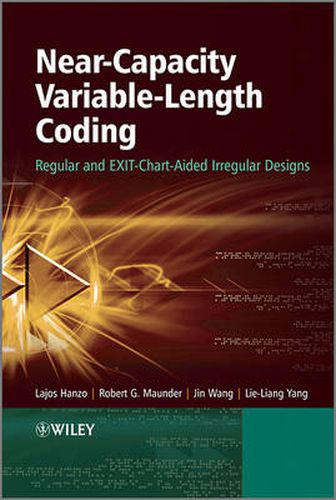Readings Newsletter
Become a Readings Member to make your shopping experience even easier.
Sign in or sign up for free!
You’re not far away from qualifying for FREE standard shipping within Australia
You’ve qualified for FREE standard shipping within Australia
The cart is loading…






Recent developments such as the invention of powerful turbo-decoding and irregular designs, together with the increase in the number of potential applications to multimedia signal compression, have increased the importance of variable length coding (VLC). Providing insights into the very latest research, the authors examine the design of diverse near-capacity VLC codes in the context of wireless telecommunications. The book commences with an introduction to Information Theory, followed by a discussion of Regular as well as Irregular Variable Length Coding and their applications in joint source and channel coding. Near-capacity designs are created using Extrinsic Information Transfer (EXIT) chart analysis. The latest techniques are discussed, outlining radical concepts such as Genetic Algorithm (GA) aided construction of diverse VLC codes. The book concludes with two chapters on VLC-based space-time transceivers as well as on frequency-hopping assisted schemes, followed by suggestions for future work on the topic. Surveys the historic evolution and development of VLCs Discusses the very latest research into VLC codes Introduces the novel concept of Irregular VLCs and their application in joint-source and channel coding
$9.00 standard shipping within Australia
FREE standard shipping within Australia for orders over $100.00
Express & International shipping calculated at checkout
Recent developments such as the invention of powerful turbo-decoding and irregular designs, together with the increase in the number of potential applications to multimedia signal compression, have increased the importance of variable length coding (VLC). Providing insights into the very latest research, the authors examine the design of diverse near-capacity VLC codes in the context of wireless telecommunications. The book commences with an introduction to Information Theory, followed by a discussion of Regular as well as Irregular Variable Length Coding and their applications in joint source and channel coding. Near-capacity designs are created using Extrinsic Information Transfer (EXIT) chart analysis. The latest techniques are discussed, outlining radical concepts such as Genetic Algorithm (GA) aided construction of diverse VLC codes. The book concludes with two chapters on VLC-based space-time transceivers as well as on frequency-hopping assisted schemes, followed by suggestions for future work on the topic. Surveys the historic evolution and development of VLCs Discusses the very latest research into VLC codes Introduces the novel concept of Irregular VLCs and their application in joint-source and channel coding